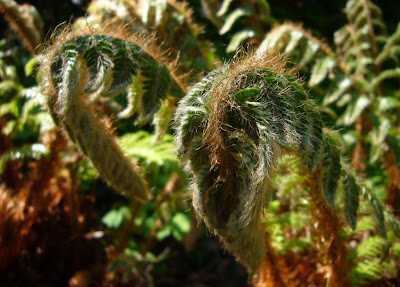The first day of the trip was all about the large cactus nurseries. Day 2 was far more relaxed, a quick tip down to the local nursery and then time to look around my friends garden and greenhouses. The local nursery is
Urban Jungle, a great little nursery with an good range of unusual plants. I have posted a few pictures before, this is the vertical planting wall that one of the staff put together. It seems to have got through the winter without any problems.
The largest greenhouse has a large planted area, with a Koi pond. There is a little coffee area to sit and take in the plants.
You have to feel for nursery owners, in March it was so hot and all the talk of draughts meant people were not buying plants as they wouldn't be able to water them. Then it rains all of April so gardens are the last place people want to be. All the time they are having to juggle young plants and new deliveries. The nursery was chock full of lovely plants with some new rarer forms all putting on growth ready for it to warm up enough to go out into the sales area.
We did our bit and bought a few little treasures and thankfully more people were turning up as we were leaving.
So shopping finished it was back to the house for the rest of the afternoon. It was too wet to properly look around the garden, (I promise I will do a post on their garden at some point), so we stuck to the inside areas. Mind you with a conservatory like this you almost don't need to go outside.

One of the best plants at the moment is the flowering agave gypsophyla. I don't think it matters how often you see agave flowers, they are always a great sight.
It is a lovely plant, such a shame it will die afterwards, but fingers crossed this pup will survive to continue the line.
It is by no means the only agave to admire, everywhere you look there are lovely plants:
I took particular interest in this agave victoria reginae hybrid, it's a stunning plant, now I just need to track one down.
I love agave mitis albicans, it really is a much better form than the normal. This one has a good set of pups forming, it is going to make an spectacular clump, either that or a good set of plants for swaps.
One of the things I look forward to on my visits is seeing all the succulent bowls. They always look amazing, so well designed proportioned. I can never get mine to look as good.
There is a joke that the house is turning into a succulent rescue centre. This is one of the plants they have rescued, not bad for a freebie.
There was also the biggest echeveria I have ever seen. It's huge and thankfully offsets freely so I was able to add one to the plants leaving with me. You would need quite a garden to have a clump of these!
Then it was out to the greenhouses. The smallest is a lean-to against a purpose built wall. It is probably the emptiest, which gives you an idea of how many plants there are.You have to tread very carefully as you walk through them.
At this point I became far to busy admiring the plants to remember to take photos, but did manage to take one of this variegated aloe polyphyla.
As I was walking past their alpine propagation area (they are stocking up for a new area in the garden) I noticed this lovely little mound. I don't know what it is about a simple mound of green that is so pleasing on the eye. Sadly this gypsophyla aretioides is another one to be added to the wants list, at least I know I can find this on easily when I decide to get it.
I could post so many more photos of plants in her collection that I am envious of, but she watches me closely enough as it is without drawing attention to the plants I would like to liberate!
























































